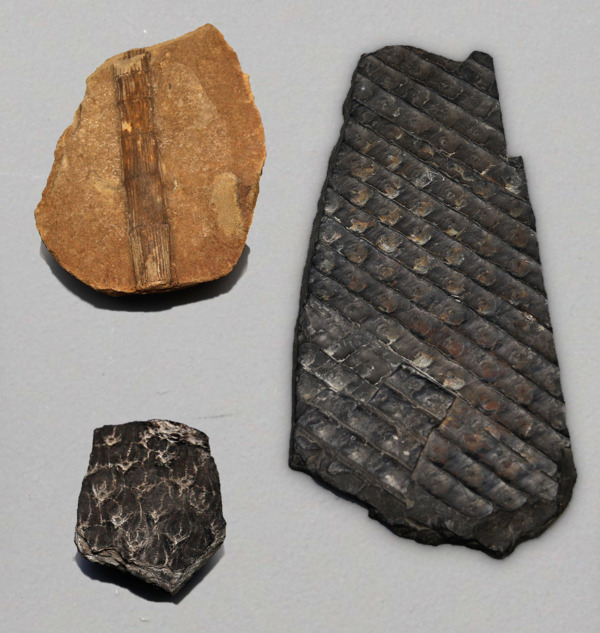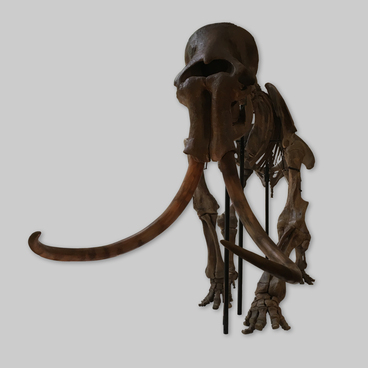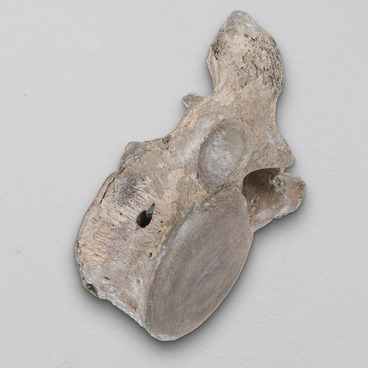Lepidodendron - a genus of extinct tree-like plants - existed on the planet about 300 million years ago. The bark of lepidodendrons resembled scales, hence the second name of these plants: scaly trees. In the early stages of their development, these scaly trees looked like hairy posts. Then branching of the trunk developed on them - the ‘fork’ was formed, and the crown was formed. The trunk had rather thick bark in comparison with modern trees, and had a high content of lignin - in its petrified state, this substance resembles cement. The huge trunks supported the vertical position with the help of stigmaria, which were a kind of temporary root that had shoots and sank shallowly into the soil. The stigmaria shed their shoots, as modern trees do in the fall, and then grew new ones.
Lepidofloios is believed to be close relative of the lepidodendron, and sometimes included in the same genus. Lepidofloiosis was distinguished from other scaly plants by the structure of the leaves. Their leaf cushions were thickened with downward projections, while those on the leaves of lepidodendron had projections directed upwards.
Arthropod plants appeared in the Devonian era about 419 million years ago, and have survived to the present day. The horsetail is an example of modern arthropod. And although the structure of modern horsetails is similar to that of ancient ones, they cannot be compared in terms of size. In the Carboniferous era, arthropod plants grew on the sandy shoals of lakes, and could rise above the water by a dozen meters. These plants got their name because of their structural features. Their stem and root consisted of separate parts - well-defined nodes and internodes. The leaves were located at the nodes of the stem along its circumference. Arthropod plants propagated by spores, like ferns.
Fern plants began to actively spread around the planet about 298 million years ago. Like many ancient plants, they were gigantic in size, comparable to modern-day trees. Over time, ferns were grew small, but they are still found in nature. As was the case millions of years ago, ferns breed by spores: they are stored in capsules under the leaves. Contrary to legend, ferns never bloomed.
Lepidofloios is believed to be close relative of the lepidodendron, and sometimes included in the same genus. Lepidofloiosis was distinguished from other scaly plants by the structure of the leaves. Their leaf cushions were thickened with downward projections, while those on the leaves of lepidodendron had projections directed upwards.
Arthropod plants appeared in the Devonian era about 419 million years ago, and have survived to the present day. The horsetail is an example of modern arthropod. And although the structure of modern horsetails is similar to that of ancient ones, they cannot be compared in terms of size. In the Carboniferous era, arthropod plants grew on the sandy shoals of lakes, and could rise above the water by a dozen meters. These plants got their name because of their structural features. Their stem and root consisted of separate parts - well-defined nodes and internodes. The leaves were located at the nodes of the stem along its circumference. Arthropod plants propagated by spores, like ferns.
Fern plants began to actively spread around the planet about 298 million years ago. Like many ancient plants, they were gigantic in size, comparable to modern-day trees. Over time, ferns were grew small, but they are still found in nature. As was the case millions of years ago, ferns breed by spores: they are stored in capsules under the leaves. Contrary to legend, ferns never bloomed.



